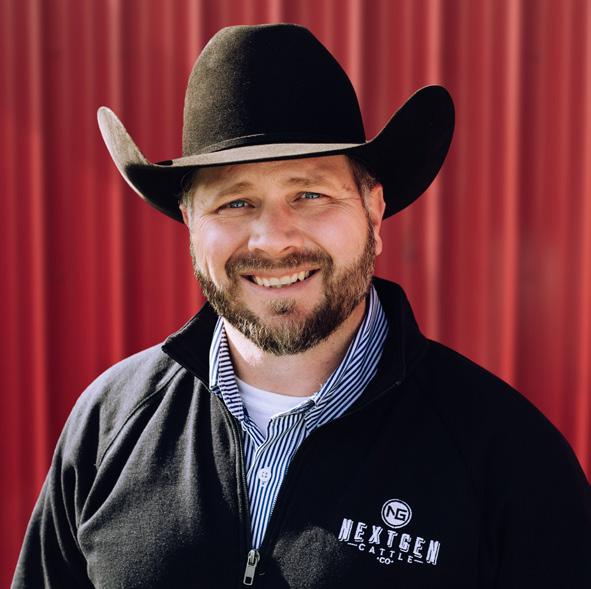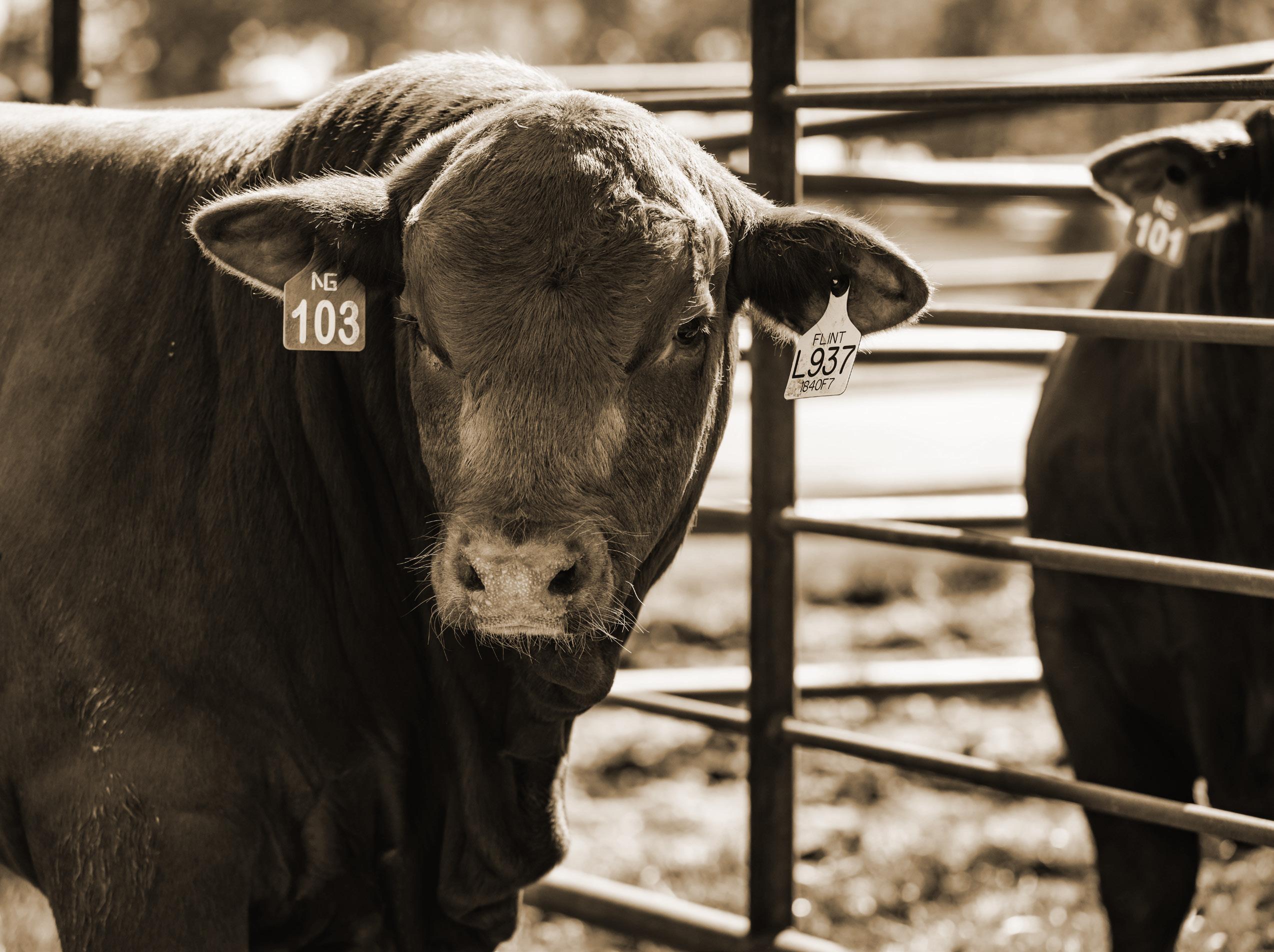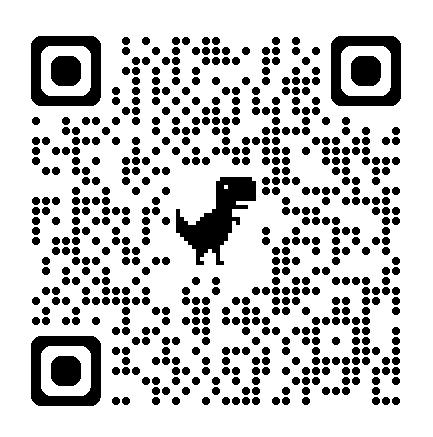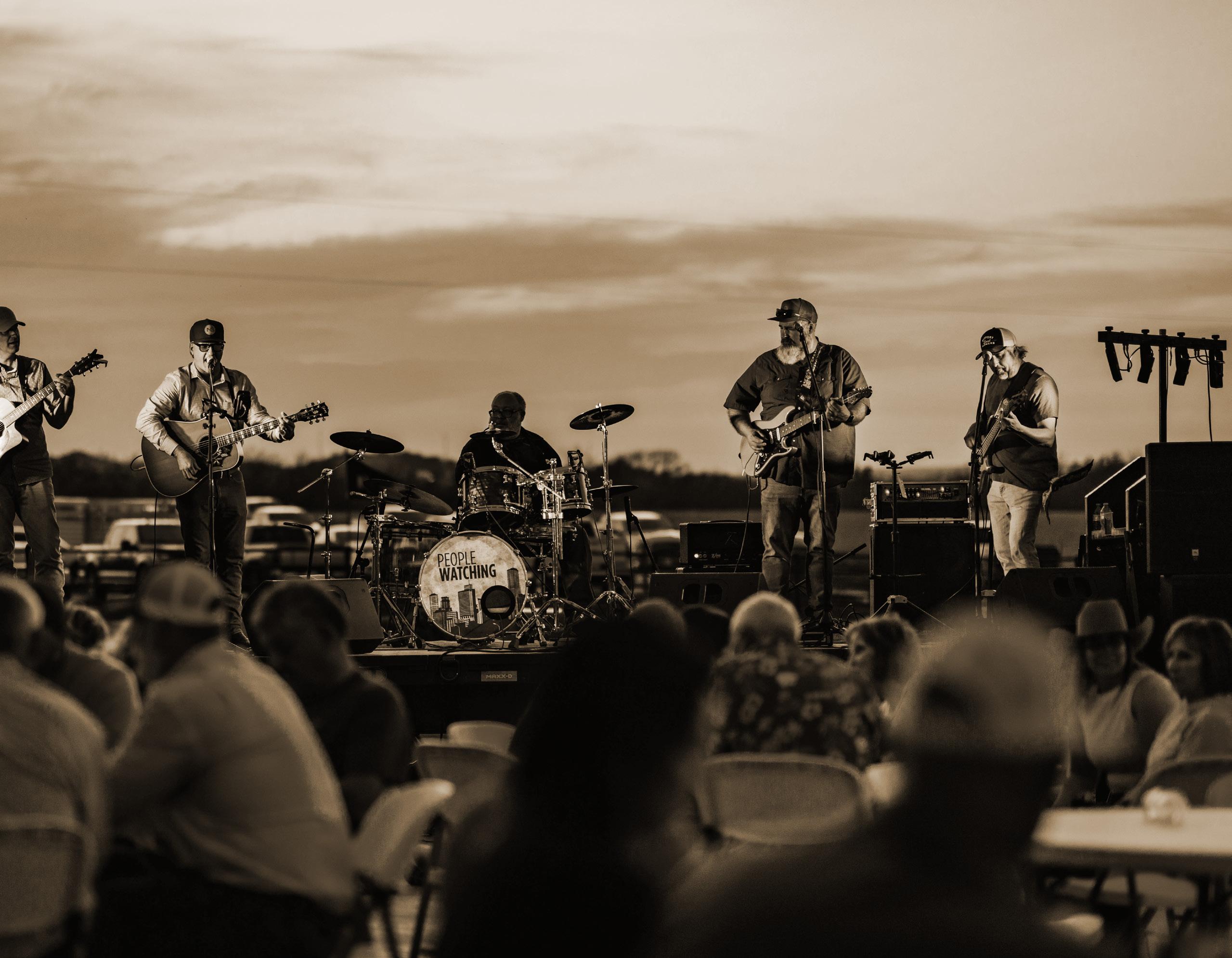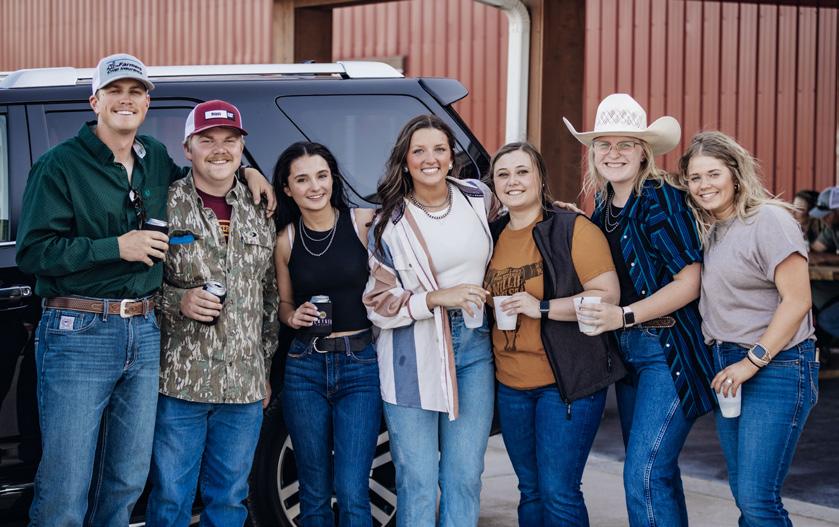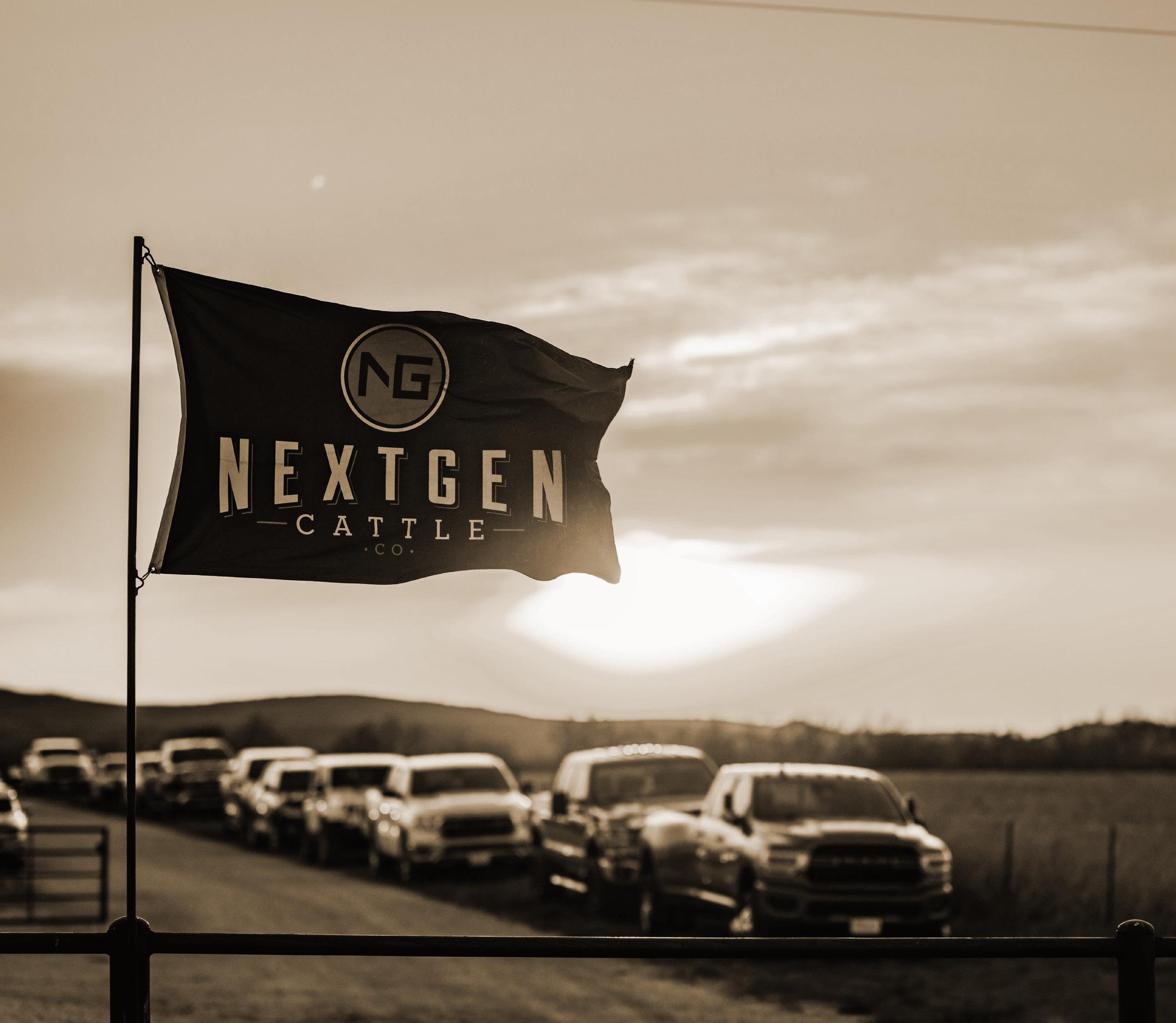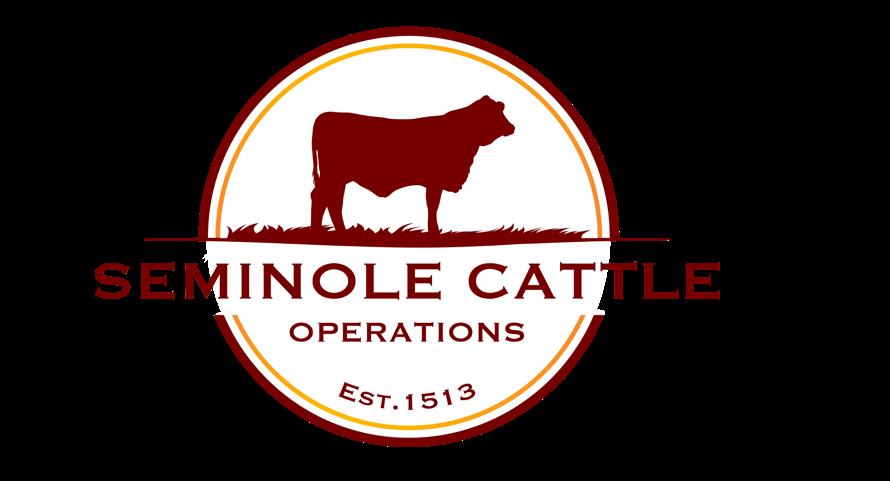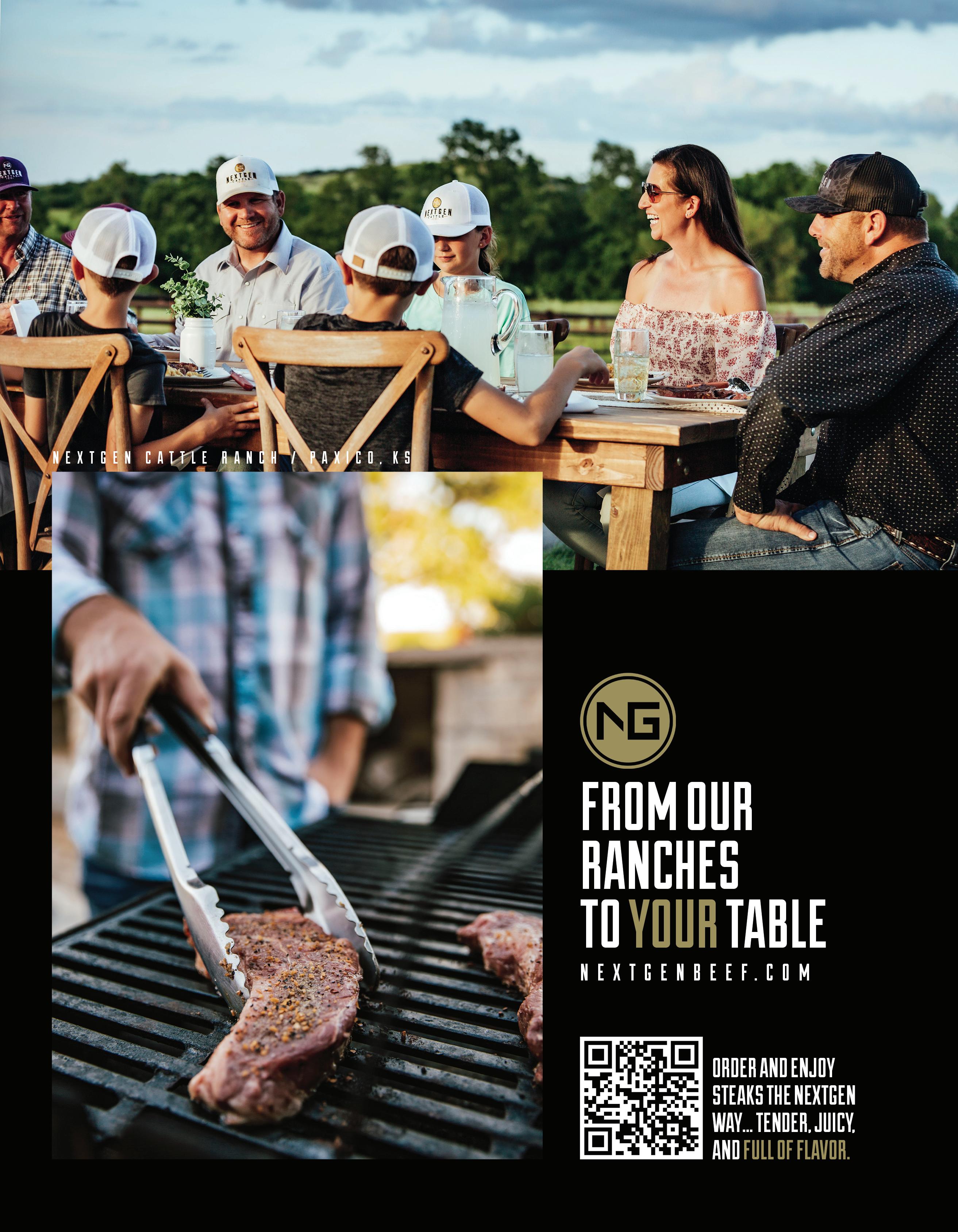FEEDYARD IMPROVEMENTS IN 2O25
We are steadily busy at the feedyard 7 days a week with the regular duties of riding pens, feeding cattle, and routine maintenance. However, we have completed two additional projects this year that are out of the normal scope of operations.
When looking into facility projects, the first question we ask is; how does this positively impact cattle and people? If we can improve upon the health and stress of cattle, along with making our peoples day-to-day more efficient, then we’ll look further into completing a project. Once the proposal checks all the boxes, we will start planning for any operational interruptions while the project is being completed.
2025 has brought us two critical upgrades. A renovation of our main processing barn and an upgrade of an existing mixer. Both checked the boxes when it came to positively impacting the cattle we feed and the people that care for them.
The processing barn renovations consisted of lessening the grade to get cattle into the barn, adding shaded slant pens to stage cattle for processing, new hydraulic chute and sorting software, hydraulic gates operated from the chute, and sort pens that allow us to sort cattle four ways efficiently. The shaded slants allow cattle to stay comfortable and eliminate shadows going into the barn. The new chute has brought the noise level down in the barn, lowering the stress levels as cattle are being processed. Our sorting software considers flesh and specific frame measurements that will allow us to market fat cattle more efficiently and target optimal carcass weights. Having hydraulic gates operated chute-side, removed the need for one person to manually open gates and saved the amount of time cattle spend in the chute. All the improvements at our processing barn have positively impacted both cattle and people.
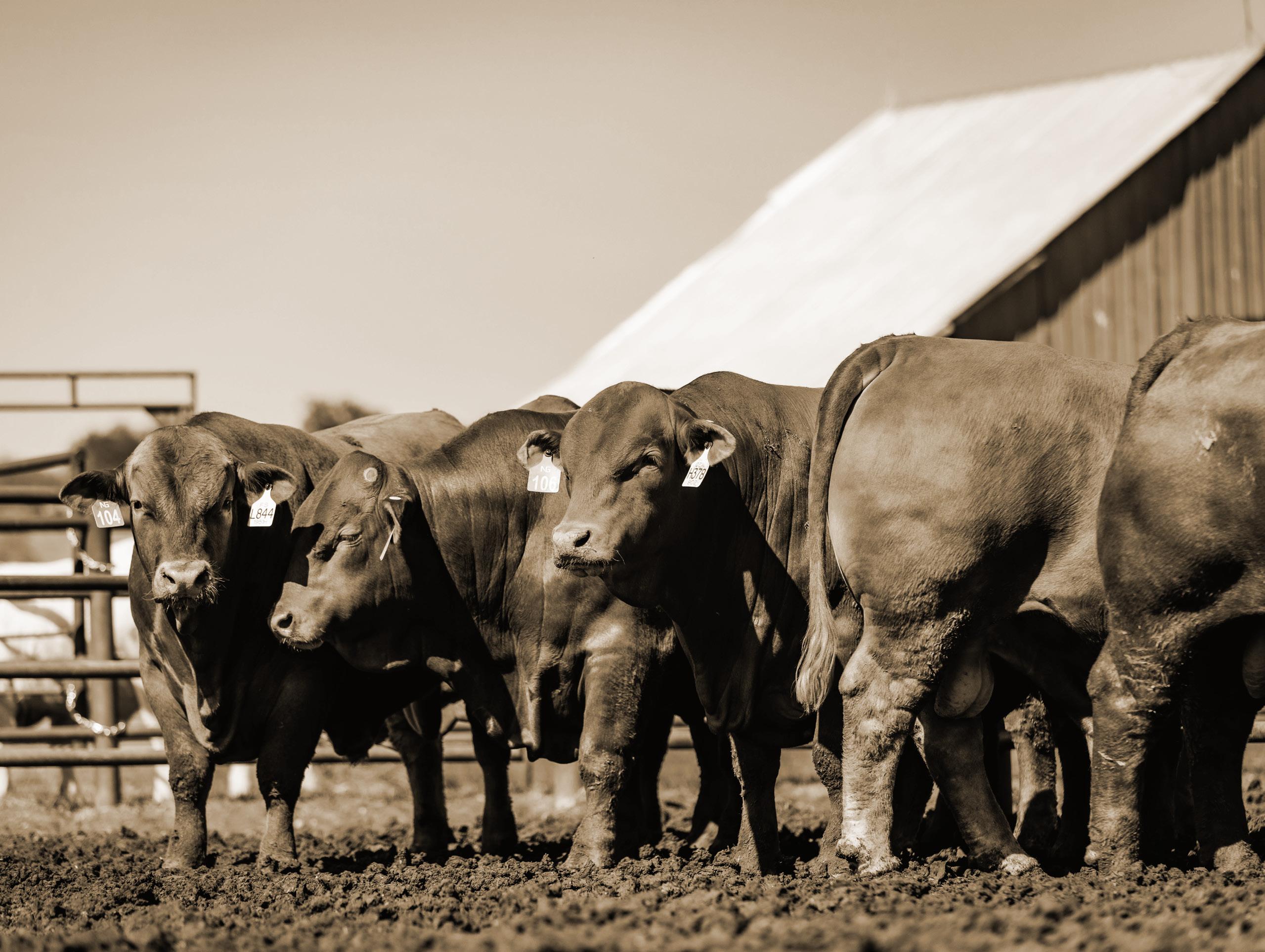

We have steadily invested in mill improvements over the past several years and this year is no exception. In June, we were able to upgrade an existing stationary mixer to a larger unit. The new unit is a twin to our second mixer. The original mixer was smaller and had a load capacity of approximately 20,000 pounds. With the upgrade, both of our mixers can now handle batches of 30,000-plus pounds. Our feed trucks are sized to match the larger capacity. This upgrade allows us to optimize the size of each batch of feed made per day and load our feed trucks to capacity. The result is a daily savings of 12-15 loads of feed per day and more consistent delivery times to each pen of cattle. Efficiency has improved to a point where we are finished feeding two hours sooner than we have in the past. Our people can get home to their families sooner and cattle are able to have feed in front of them timely throughout the day. Both check the two boxes that matter the most.
We have always been proud of the facility, these steady improvements allow us to keep the most current technology available to our cattle, customers, and people. If you are ever passing through Southwest Kansas, we would love to give you a tour of the facility and introduce you to our people.
PLAN TO JOIN US AT THE SALE!
DOUG HUSFELD
NEXTGEN DIRECTOR OF SALES
AND PRODUCER RELATIONS
SEMINOLE TRIBE OF FLORIDA
“As Dad enters the deep water ahead of the cattle we can see how deep it is, his horse’s head is up and the water was above the swells on his saddle. Although his feet are touching the ground beneath the water, every few feet the big horse swims a little ways until he gets another good foothold. And Dad has the tallest horse in the crew.
The cattle know this harsh country better than we do and they want no part of this deep water. They are tired from the morning drive and may not have the strength to swim it but there is no way to go around and no place to hold them to rest, we haven’t pushed them hard so I hope they have enough energy to make it across.”
“COWBOY
LEGACY, A LIFETIME IN THE SADDLE” BY CLINT RAULERSON, PAGES 92-93
South Florida is one of the most beautiful and unforgiving ranching environments in the world. When Juan Ponce De Leon first landed on the isthmus, that would become Florida in 1513, he brought livestock with him to support his exploratory endeavors. The Native Americans Ponce de Leon encountered were called “Cimmaron” in Spanish, which means “wild and untamed”. The Seminole Tribe of Florida derives their name from this original Spanish description. Upon leaving Florida, the Spaniards left cattle that prospered in the new environment. The Seminoles took ownership of these Spanish cattle, later called “Criollo”, and the Seminoles became the first cattle ranchers in North
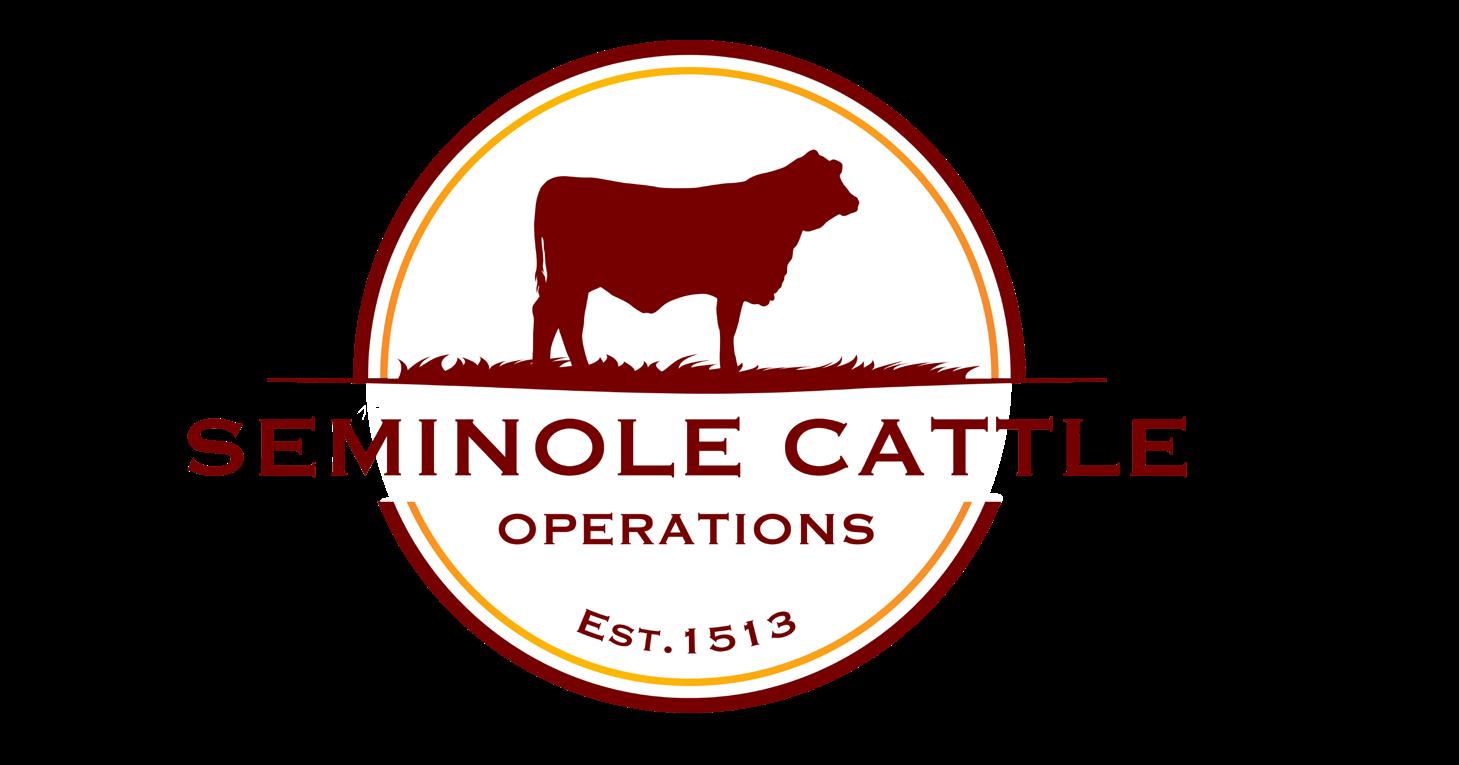
Fast forward about 400 years, the Dust Bowl of the 1930’s created devastation across the US, but it also created opportunities. Hereford cattle were purchased and delivered via rail to Florida. These cattle were driven horseback to the Seminole ranches and crossed with the Criollo cattle the Seminole tribe owned. The results were incredible. Heterosis is a wonderful thing.
Tribal leadership decided to bring in outside management to help them expand their cow herd, develop better genetics and create more marketing opportunities. This is where things get interesting.
TOMMY MANN ( 1972-199O ) came to work for the Seminole Tribe and introduced Brahman bulls to the operation. Tremendous females resulted from the cross on the predominately Hereford based females. Maternal heterosis.
GARY RAULERSON ( 1993-2O14 ) managed the Miccosukee Ranch on the edge of the Everglades focusing on raising productive maternal females that could handle an extremely harsh environment, along with raising big stout feeder calves. Maternal heterosis.
DON ROBERTSON ( 199O-2O13 ) added Brangus genetics to stabilize hide color and add feedyard performance and carcass value to the F1 females they were ranching at the time. Maternal and growth heterosis.
ALEX JOHNS ( 2O14-2O2O ), a Seminole tribal member, added a purebred Brangus herd to the operation and took the ranches to a whole new level. Alex also added NextGen Charolais bulls to the breeding program on their older cows to enhance the weight and value of the calves they produced. Maternal, growth and terminal heterosis.
CLINT RAULERSON (2O23-PRESENT) stepped in to continue to push the genetics and breeding program forward. NextGen Beefmaster and NextGen AngusX bulls were added to enhance the value of the many loads of calves that are sold annually. Maternal, growth and terminal heterosis that includes tremendous marketability.
As most of you reading this newsletter know, NextGen really likes buying calves out of our genetics from our bull customers. It seems as though word has gotten out how well NextGen sired calves perform both in the feedyard and on the rail. For example, our
“CATTLE FOR THE SEMINOLE TRIBE IS A STORY OF SURVIVAL, SACRIFICE AND SUCCESS.
WE REMAIN AN UNCONQUERED PEOPLE BECAUSE WE HAD THE SPANISH HORSES AND CATTLE. IN THE PAST, THE CRIOLLO CATTLE PROVIDED SUSTENANCE FOR OUR SMALL TRIBE THROUGH THE THREE SEMINOLE WARS.
TODAY OUR GENETICALLY SUPERIOR CATTLE ARE HELPING TO FEED THE WORLD.”
NextGen Feedyard crew had 50,000 head of cattle to choose from to send to Beef Empire Days in Garden City, KS, an event that has been held for 57 years and challenges feedyards in the region to send in the best of the best for live and carcass evaluation.
Two steers were chosen by NextGen employees that were from calves we bought from The Seminole Tribe of Florida.
Here is the data:
The results speak for them self. Decades of planned breeding and great management have made the oldest, and one of the largest ranching operations in North America a true success.
ALEX JOHNS MEMBER OF THE SEMINOLE TRIBE OF FLORIDA
BILL PENDERGRASS
GENETIC CONSULTANT
Grid Marketing allows the fine tuning of each sector to maximize profit in every link of the supply chain. It is vital, however, to remember that grids are a designed economic benefit of the packer, whose interests may not be shared by his supply partners. Capitalism dictates that each supply point must understand his own production and profitability requires those parameters to best implement them.
It is important to note, grids calculate value exclusively on carcass value, there is no consideration for maternal worth. Which at its root is arguably the most important trait in the supply chain. Regardless of the sector, every calf that is marketed relies on a strong maternal base.
OVERLOOKED VALUE ADDING FINANCIAL SUPPLEMENTS TO MAXIMIZE GRID MARKETING
Outside of strategic vaccination protocols, heterosis from your planned terminal crossbreeding program is your best insurance policy.
How do we overlook vital terminal attributes and leave money on the table? Simply put, grid formulas do not account for valuable revenue drivers for the entirety of the supply chain. Healthier, more feed-efficient cattle who post higher hot carcass yields, make a strong argument that the pathway to adding value lies not in exclusive carcass grid drivers, but in specific terminal traits such as growth and feed efficiency. Only the cow-calf and feeding sectors realize this value and maximize these categories by tweaking genetic inputs and yard management.
WHILE A STRONG MATERNAL BASE IS THE FOUNDATION OF THE INDUSTRY, PLANNED TERMINAL CROSSBREEDING IS THE KEY TO CREATING VALUE BEYOND THE GRID.
This is where genetics lay the groundwork for premiumearning, value-based marketing opportunities upstream partners survive on. Anchoring your cow herd on maternal heterosis certainly will give a boost to those low and moderately heritable traits on which we all rely.
When considered in aggregate, health and feed conversion are primary drivers for the holy grail of cattle feeding: cost of gain. Obviously, dead cattle cannot be sold on grids. Illness can make your closeouts suffer not just from treatment cost but also from performance losses. Animal health is an often-overlooked cost of gain driver.
In closing, cow-calf operations can add tremendous value by utilizing high-performing genetics when retaining ownership or partnering on their feeder calves, subsequently capturing value which upstream partners do not always recognize. While a strong maternal base is the foundation of the industry, planned terminal crossbreeding is the key to creating value beyond the grid. After all, we may be selling on a grid, but we are still selling pounds.
DAVID HOLLOWAY
NEXTGEN CHIEF RISK OFFICER
CPRINGSALE
attle prices remain bullish. The cow herd is still shrinking and beef demand is strong; the combination of those two make a solid case for higher prices yet to come.
On the supply side, there is a lot of discussion about early stages of widespread heifer retention. I don’t see that occurring in the available data, and only scattered instances in the anecdotal evidence. Many aspiring ranchers can’t afford to enter for the same reason the older guys are leaving – record high prices. Throw in the usual factors of higher input costs, land development, recreational uses, public land grazing woes, etc. and the bar for widespread herd growth remains too high. Supply will be tight for some years to come, and that’s bullish.
Demand has been strong, even at record high retail prices. Meat protein demand has been booming here and abroad. The economic analysis continues to point to younger people eating more beef. That group has growing incomes and bigger appetites, both sound reasons to expect motivated buyers into the future. Demand is bullish cattle prices.
What can go wrong with the bullish case? First, industry packing capacity gets right sized to fit the shrinking cow herd. That’s likely to happen at some point and will be a negative price input. Demand is highly correlated with income, and an economic downturn will be a second negative price input. However, historically that has been a shallow and shortlived negative on cattle prices.


